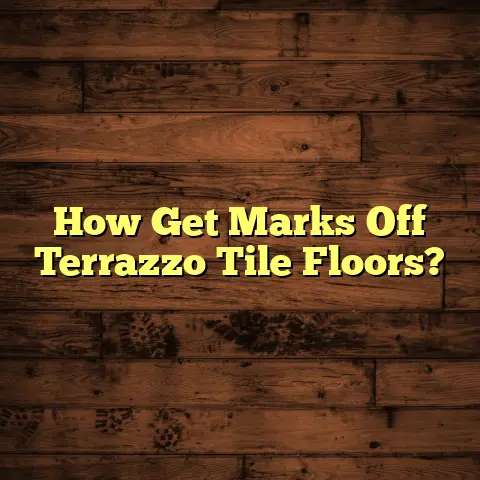Hardwood Floors Invented? (1 Surprising Year!)
The Surprising Invention of Hardwood Floors!
As a flooring contractor for over 15 years, I’ve seen trends come and go, but one thing remains constant: the timeless appeal of hardwood floors.
They’re beautiful, durable, and add a touch of elegance to any space. But have you ever wondered when and how these amazing floors came to be?
The answer might surprise you!
This article dives deep into the history of hardwood floors, revealing the pivotal year that changed the flooring landscape forever.
We’ll explore the evolution of flooring materials, the technological advancements that made hardwood possible, and its impact on modern interior design.
So, buckle up, and let’s uncover the secrets behind one of the most beloved flooring options in the world!
Section 1: A Brief History of Flooring
Flooring has been around for… well, forever!
Think about it: even our cave-dwelling ancestors needed something underfoot to protect them from the cold, damp earth.
Early flooring solutions were pretty basic: packed earth, animal hides, or simple stone slabs.
As civilizations developed, so did their flooring.
The ancient Egyptians used clay tiles, while the Romans were masters of mosaic and stone flooring. These materials were durable and readily available.
But what about wood?
Wooden flooring has been used for centuries, but it wasn’t always the refined hardwood we know today.
Early wooden floors were often rough-hewn planks or logs, providing a functional but not particularly attractive surface.
The transition to hardwood as a preferred flooring option was gradual.
Hardwood, with its denser grain and superior durability, was recognized for its longevity and resistance to wear and tear.
Different cultures embraced hardwood for its aesthetic qualities and practical benefits.
In Europe, hardwood floors became a symbol of wealth and status, adorning castles and grand estates.
In Asia, bamboo and other hardwoods were used extensively in traditional homes and temples.
Section 2: The Surprising Year
Alright, let’s get to the heart of the matter: the year that changed everything.
While there isn’t one single “invention date” for hardwood floors as we know them today, a pivotal period emerged in the 17th century.
Specifically, the late 1600s saw significant advancements that paved the way for modern hardwood flooring.
Why this period? Several factors converged:
-
Economic Growth: The 17th century was a time of increasing trade and prosperity, particularly in Europe. This led to a demand for more luxurious and durable building materials.
-
Technological Advancements: Innovations in sawmills and woodworking tools allowed for the production of more precise and uniform wooden planks.
-
Shifting Social Norms: As societies became more refined, there was a growing emphasis on cleanliness and aesthetics in the home.
While no single inventor can be credited, skilled craftsmen and artisans played a crucial role in developing and refining hardwood flooring techniques.
These individuals experimented with different wood species, milling methods, and finishing techniques to create more durable and beautiful floors.
One lesser-known fact about this period is the influence of shipbuilding.
Shipbuilders were highly skilled in working with wood, and their techniques for creating watertight and durable vessels were adapted for flooring applications.
For example, the practice of using tongue-and-groove joinery, commonly used in shipbuilding, was adopted to create seamless and stable hardwood floors.
Section 3: The Technological Advancements
Leading to Hardwood Flooring
The late 1600s and early 1700s marked a turning point in woodworking technology, which directly impacted the development of hardwood flooring.
One of the most significant advancements was the introduction of water-powered sawmills.
These mills allowed for the mass production of lumber, making it more accessible and affordable.
Prior to this, lumber was primarily sawn by hand, a slow and labor-intensive process.
The development of more sophisticated woodworking tools, such as planes, chisels, and saws, also played a crucial role.
These tools enabled craftsmen to create more precise and intricate designs, leading to the development of more refined hardwood floors.
Milling techniques also underwent significant transformations.
Early hardwood floors were often made from wide, random-width planks that were simply nailed to the subfloor.
However, as milling techniques improved, it became possible to create more uniform and dimensionally stable planks.
The introduction of tongue-and-groove joinery was a game-changer, allowing for the creation of seamless and interlocking floors that were less prone to warping and movement.
Early hardwood floor designs were relatively simple, often consisting of straight planks laid in a parallel pattern.
However, as craftsmanship improved, more elaborate designs began to emerge.
Parquet floors, featuring intricate geometric patterns created from small pieces of wood, became popular in wealthy homes and palaces.
These early hardwood floors were often finished with natural oils or waxes to protect the wood and enhance its natural beauty.
Section 4: The Rise in Popularity of
Hardwood Floors
By the 18th and 19th centuries, hardwood floors were becoming increasingly popular in homes and commercial spaces.
Several factors contributed to this growing popularity:
-
Aesthetics: Hardwood floors were seen as a more elegant and sophisticated alternative to other flooring options, such as stone or clay.
-
Practicality: Hardwood floors were durable, easy to clean, and provided a warm and comfortable surface underfoot.
-
Economics: As lumber became more affordable, hardwood floors became accessible to a wider range of homeowners.
The demand for hardwood floors continued to increase throughout the 20th century, driven by factors such as suburbanization and the rise of modern interior design.
Statistics from the National Wood Flooring Association (NWFA) show a steady increase in hardwood flooring sales over the past several decades, indicating its enduring popularity.
Hardwood floors also hold cultural significance in different regions.
In the United States, hardwood floors are often associated with traditional American homes and are highly valued for their timeless appeal.
In Europe, hardwood floors are seen as a symbol of luxury and sophistication, adorning historic buildings and modern apartments alike.
Section 5: The Impact of Hardwood Floors
on Interior Design
The invention of hardwood flooring has had a profound impact on interior design trends.
Hardwood floors are incredibly versatile and can complement a wide range of design styles, from traditional to modern to rustic.
-
Traditional: Hardwood floors add warmth and character to traditional homes, creating a classic and inviting atmosphere.
-
Modern: Hardwood floors provide a clean and sophisticated backdrop for modern interiors, allowing furniture and decor to take center stage.
-
Rustic: Hardwood floors enhance the natural appeal of rustic homes, creating a cozy and inviting space.
I’ve worked with countless interior designers who emphasize the importance of hardwood flooring in their work.
Many designers see hardwood floors as the foundation of a well-designed room, providing a neutral canvas that can be easily customized with different colors, textures, and patterns.
Sustainability is also a growing concern in the flooring industry.
Many homeowners are now seeking responsibly sourced hardwood floors that are harvested from sustainably managed forests.
The Forest Stewardship Council (FSC) is an organization that certifies wood products that meet strict environmental and social standards.
Section 6: The Future of Hardwood Floors
Looking ahead, the future of hardwood flooring is bright, with exciting advancements on the horizon.
One major trend is the rise of engineered hardwood.
Engineered hardwood consists of a thin layer of solid hardwood bonded to a core of plywood or other composite material.
This construction makes engineered hardwood more dimensionally stable than solid hardwood, making it less prone to warping and movement.
Eco-friendly finishes are also gaining popularity.
These finishes are made from natural oils, waxes, and resins, and they are free of harmful chemicals and VOCs (volatile organic compounds).
Innovations in installation techniques are also making hardwood flooring more accessible to DIYers and homeowners.
Click-lock systems, for example, allow for easy and glue-free installation, reducing the time and cost of professional installation.
Despite evolving consumer preferences and environmental concerns, hardwood floors remain a timeless and desirable flooring option.
Their durability, beauty, and versatility ensure their continued relevance in the years to come.
Conclusion
So, there you have it: the surprising story of the invention of hardwood floors!
While there’s no single “eureka” moment, the late 1600s marked a pivotal period in the development of hardwood flooring as we know it today.
Technological advancements, economic growth, and shifting social norms all contributed to the rise of hardwood as a preferred flooring option.
From its humble beginnings as rough-hewn planks to its current status as a symbol of luxury and sophistication, hardwood flooring has come a long way.
Its impact on interior design is undeniable, and its enduring popularity ensures its continued relevance in the years to come.
As you walk across your own hardwood floors, take a moment to appreciate the rich history and craftsmanship that went into creating this timeless flooring option.
What kind of hardwood floors do you have?
Do you love them?
Call to Action (Optional)
I’d love to hear your thoughts and experiences with hardwood flooring!
Share your comments below, or connect with me on social media. Let’s keep the conversation going!





